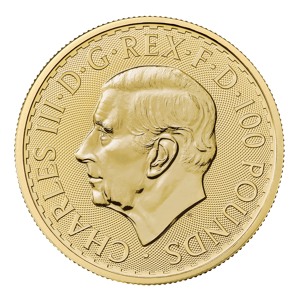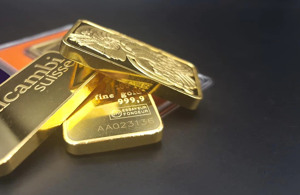Tavex uses cookies to ensure website functionality and improve your user experience. Collecting data from cookies helps us provide the best experience for you, keeps your account secure and allows us to personalise advert content. You can find out more in our cookie policy.
Please select what cookies you allow us to use
Cookies are small files of letters and digits downloaded and saved on your computer or another device (for instance, a mobile phone, a tablet) and saved in your browser while you visit a website. They can be used to track the pages you visit on the website, save the information you enter or remember your preferences such as language settings as long as you’re browsing the website.
| Cookie name | Cookie description | Cookie duration |
|---|---|---|
| tavex_cookie_consent | Stores cookie consent options selected | 60 weeks |
| tavex_customer | Tavex customer ID | 30 days |
| wp-wpml_current_language | Stores selected language | 1 day |
| AWSALB | AWS ALB sticky session cookie | 6 days |
| AWSALBCORS | AWS ALB sticky session cookie | 6 days |
| NO_CACHE | Used to disable page caching | 1 day |
| PHPSESSID | Identifier for PHP session | Session |
| latest_news | Helps to keep notifications relevant by storing the latest news shown | 29 days |
| latest_news_flash | Helps to keep notifications relevant by storing the latest news shown | 29 days |
| tavex_recently_viewed_products | List of recently viewed products | 1 day |
| tavex_compare_amount | Number of items in product comparison view | 1 day |
| Cookie name | Cookie description | Cookie duration |
|---|---|---|
| chart-widget-tab-*-*-* | Remembers last chart options (i.e currency, time period, etc) | 29 days |
| archive_layout | Stores selected product layout on category pages | 1 day |
| Cookie name | Cookie description | Cookie duration |
|---|---|---|
| cartstack.com-* | Used for tracking abandoned shopping carts | 1 year |
| _omappvp | Used by OptinMonster for determining new vs. returning visitors. Expires in 11 years | 11 years |
| _omappvs | Used by OptinMonster for determining when a new visitor becomes a returning visitor | Session |
| om* | Used by OptinMonster to track interactions with campaigns | Persistent |
| Cookie name | Cookie description | Cookie duration |
|---|---|---|
| _ga | Used to distinguish users | 2 years |
| _gid | Used to distinguish users | 24 hours |
| _ga_* | Used to persist session state | 2 years |
| _gac_* | Contains campaign related information | 90 days |
| _gat_gtag_* | Used to throttle request rate | 1 minute |
| _fbc | Facebook advertisement cookie | 2 years |
| _fbp | Facebook cookie for distinguishing unique users | 2 years |
Zimbabwe Sees Price Drop as Gold-Backed Currency Strengthens

Zimbabwe, which has struggled with high inflation for years, is now experiencing deflation after backing its new local currency with gold.
Read more on the topic here: Zimbabwe is moving to a gold backed currency
Last week, the local statistics office released updated consumer price index data, revealing that prices in May, measured in the new currency ZiG (Zimbabwe Gold), fell by 2.4 percent compared to the previous month. In US dollars, which are also widely used in the country, prices decreased by 0.6 percent for the month. This indicates that, in terms of domestic prices, Zimbabwe’s new currency is gaining strength against the dollar.
This trend is further reflected in the official exchange rate set by the central bank.
Since April 8, the ZiG national currency has appreciated by 1.8 percent against the US dollar
However, local residents remain skeptical of the new currency, leading to its lower valuation on the local black market. Just one month after its introduction, the ZiG had already depreciated by 15 percent against the dollar in black market trading.
Local residents and analysts are skeptical because Zimbabwe has experimented with several different currencies over the past few decades, all of which have collapsed. Notably, none of these previous currencies were backed by gold.
However, the latest inflation figures indicate that the country is moving in the right direction in the long term. With prices falling and the currency strengthening, there are positive signs. Nonetheless, rebuilding public trust will require time and effort.
Monetary Policymakers and the Government Want to Win Back Trust

The country’s monetary policymakers forecast that Zimbabwe’s annual inflation will range between 2 and 5 percent this year. Despite skepticism surrounding the new currency, they assure that the ZiG will become a desirable currency for people to hold, potentially attracting investment to the country in the short term and even more in the longer term.
“ZiG’s goal is to restore money in the economy and restore investors’ confidence. For this, trust in the currency itself must be restored,” said Innocent Matshe, Deputy Governor of the Central Bank of Zimbabwe, at the beginning of May. “The goal is to achieve price and exchange rate stability.”
In April, the increase in consumer prices in Zimbabwe reached 57.5 percent, up from 55.3 percent in March. This April increase was still measured in the old currency. Starting in May, price changes began to be reflected in the new gold-backed currency.
Monetary policymakers and the government are hopeful that backing the currency with gold will finally bring stability to the financial market. They have pledged to introduce new money into circulation only based on reserves (collateral). It was excessive money printing that led to the collapse of previous currencies.
“It is a domestic currency that is creating more and more confidence and trust in the Zimbabwean economy,” he said at an investment conference in Johannesburg. “The central bank will not finance government spending with newly created currency.”
Guaranteed Money

The ZiG is backed by 2.5 tons of gold and $100 million (United States dollar) in foreign currency reserves held by the central bank. With the introduction of the new currency, the central bank lowered interest rates from 130 percent, the highest rate among the world’s central banks (including Bank of England and Federal Reserve), to 20 percent.
It makes perfect sense that the new currency has strengthened against others because the value of the gold backing it has increased in virtually all currencies. The fundamental principle of a monetary system backed by gold or another asset is that no more banknotes are allowed into circulation than the value of the assets backing them. If banknotes are exchanged for gold at a bank, those banknotes must be removed from circulation, reducing the amount of currency. The same process happens in reverse when gold is exchanged for banknotes.
Zimbabwe is the first country since 1971 to back its currency with gold
In 1971, then-US President Richard Nixon abandoned the Bretton Woods system, delinking the dollar from gold. Since most other currencies were in turn backed by the dollar, this decision effectively removed the security of all those currencies.
The Previous Currency Crashed

Zimbabwe Gold (ZiG) has been the official currency since April 8. Besides being backed by gold, it is also supported by foreign currencies and other precious metals. The country is infamous for its hyperinflation in 2008, when $100 trillion banknotes were issued, and inflation soared to billions of percent.
Over the past 15 years, Zimbabwe has experimented with six different currencies. The ZiG replaced the previous Zimbabwean dollar, which experienced multiple crashes over five years. This period was marked by high inflation, often exceeding 50 percent annually.
By April 5, when the previous currency was abandoned, it had lost 80 percent of its value against the dollar within a year
The depreciation of the currency made daily transactions challenging. To keep up with the decline in purchasing power, prices in shops and restaurants had to be frequently adjusted, often by adding extra zeros.
As a result, the US dollar became more widely used in the country, offering much-needed stability for locals. Initially, 13.56 ZiG was required to buy one US dollar, but the new currency has since strengthened to 13.32 ZiG, according to the Central Bank. This represents an almost 2 percent increase in value over two months.

















